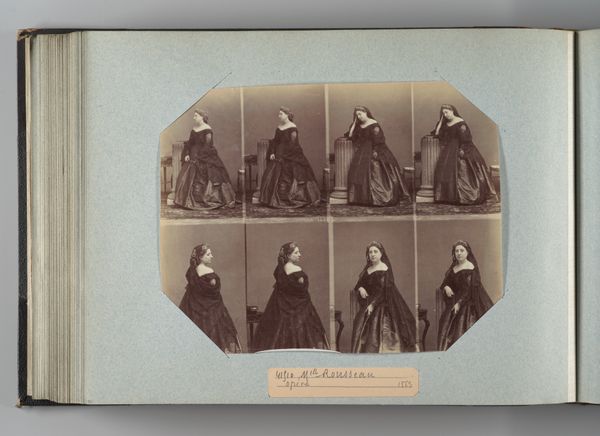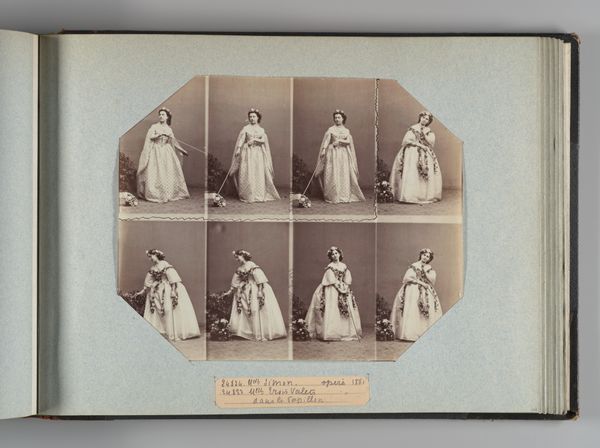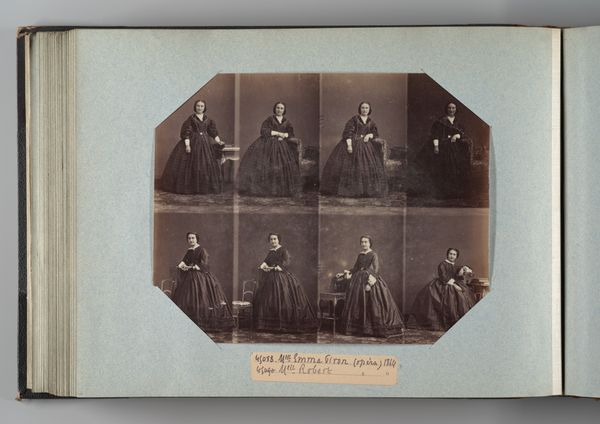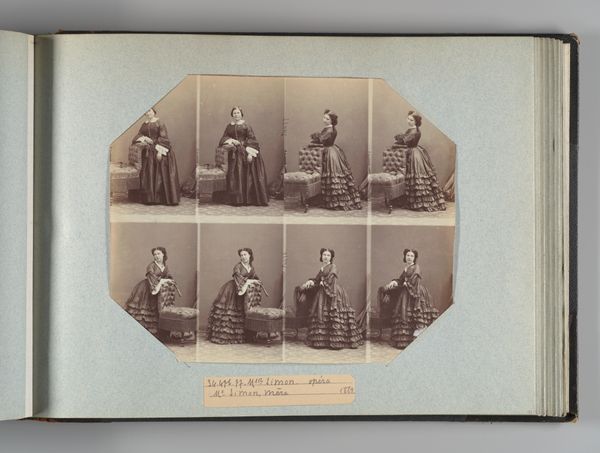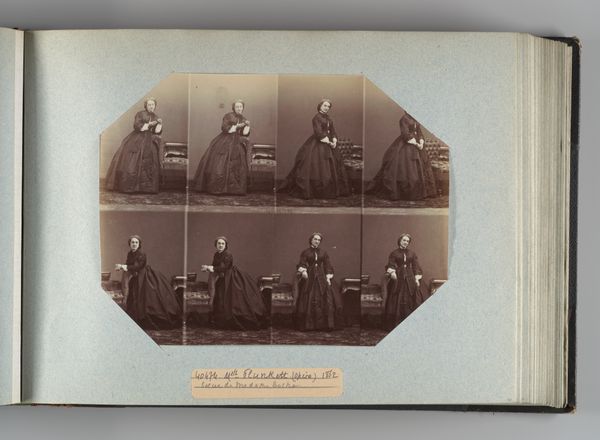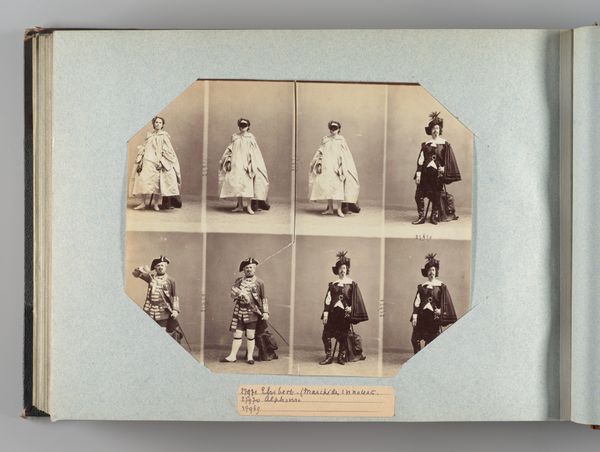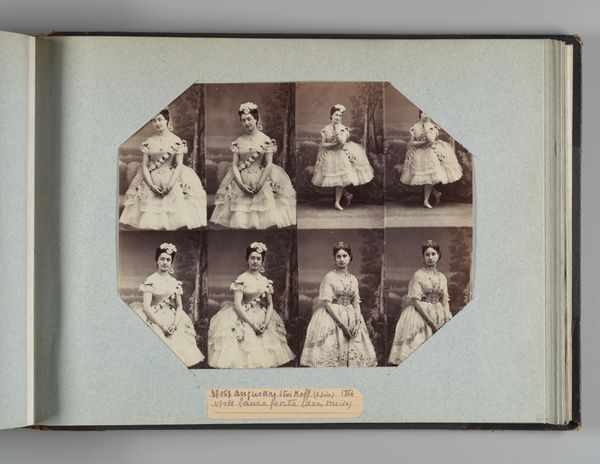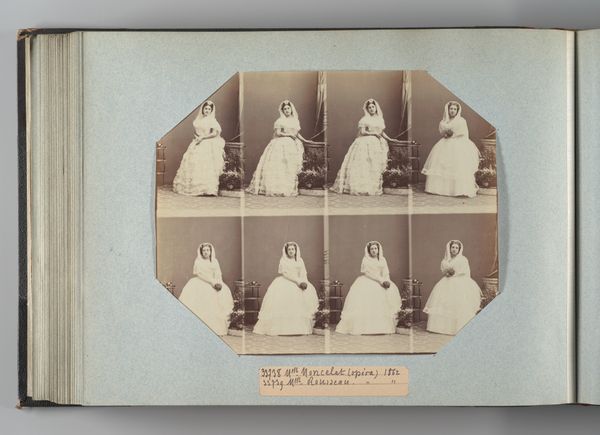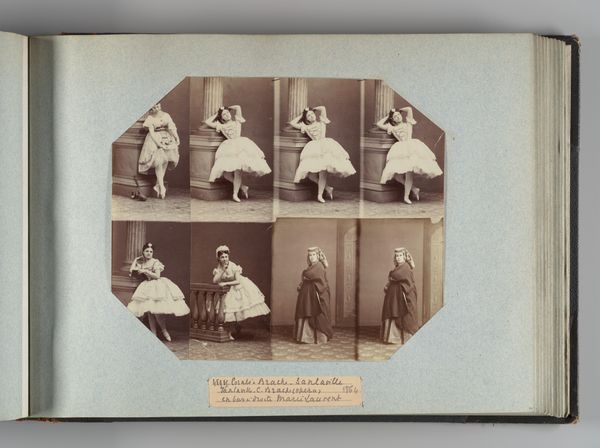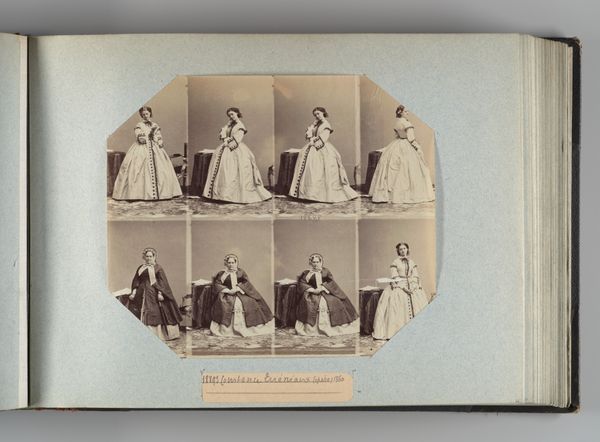
photography
#
portrait
#
photography
Dimensions: Image: 7 3/8 × 9 1/4 in. (18.8 × 23.5 cm) Album page: 10 3/8 × 13 3/4 in. (26.3 × 35 cm)
Copyright: Public Domain
Curator: This is "Mlle Rousseau; Mlle Mercier," a photograph made around 1864 by André-Adolphe-Eugène Disdéri, currently residing here at the Met. What strikes you most when you first look at it? Editor: The repetition! It's like a silent film reel, stuck on pause. A poignant echo of a lost moment. I wonder about the nature of portraiture and time. Does photography stop or elongate a moment? Curator: Indeed. Disdéri was known for his carte-de-visite photographs, small and inexpensive portraits. These were incredibly popular. The mass production is the key element to discuss when reflecting on the role that the democratization of art has in contemporary artistic thinking. This image really plays with this form, doesn't it? Editor: Mass production of portraits… it takes away from the uniqueness that has long been one of art's selling points. So is it then the industrial era challenging the art establishment in this picture? Curator: Precisely. Think about the materials: a relatively simple chemical process printed onto paper, and also the staging for eight similar poses—all intended for widespread distribution and consumption, and how they intersect with concepts of authorship and value. Editor: It seems rather ironic that those opera singers posed very precisely in all those photos but now looking at those "repeats" the impression is less serious but more fragile…almost dream-like... Did Disdéri plan that "dreamy" effect? Or were his clients concerned more with representation and self-image in that particular age? Curator: These portraits capture the aspirations of a burgeoning middle class. These images weren't just about documenting likeness; they were about signaling status. Think of the dresses; you can also tell a lot from the chair they sit in, what poses were chosen and preferred, and by the number of photos created from a single visit. It changed the art market forever. Editor: Almost a premonition of the Warhol's Marilyn prints and multiples... Fascinating to contemplate how a simple portrait could hint at shifts in power dynamics and consumption models through time. A great case study for any aspiring materialist! Curator: Absolutely! It reminds us that art doesn't exist in a vacuum.
Comments
No comments
Be the first to comment and join the conversation on the ultimate creative platform.

